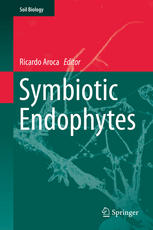

Most ebook files are in PDF format, so you can easily read them using various software such as Foxit Reader or directly on the Google Chrome browser.
Some ebook files are released by publishers in other formats such as .awz, .mobi, .epub, .fb2, etc. You may need to install specific software to read these formats on mobile/PC, such as Calibre.
Please read the tutorial at this link: https://ebookbell.com/faq
We offer FREE conversion to the popular formats you request; however, this may take some time. Therefore, right after payment, please email us, and we will try to provide the service as quickly as possible.
For some exceptional file formats or broken links (if any), please refrain from opening any disputes. Instead, email us first, and we will try to assist within a maximum of 6 hours.
EbookBell Team

4.8
104 reviewsThis Soil Biology volume examines our current understanding of the mechanisms involved in the beneficial effects transferred to plants by endophytes such as rhizobial, actinorhizal, arbuscular mycorrhizal symbionts and yeasts.
Topics presented include how symbiosis starts on the molecular level; chemical signaling in mycorrhizal symbiosis; genomic and functional diversity of endophytes; nitrogen fixation; nutrient uptake and cycling; as well as plant protection against various stress conditions. Further, the use of beneficial microorganisms as biopesticides is discussed, particularly the application of Plant Growth Promoter Rhizobacteria (PGPR) in agriculture with the aim to increase yields.